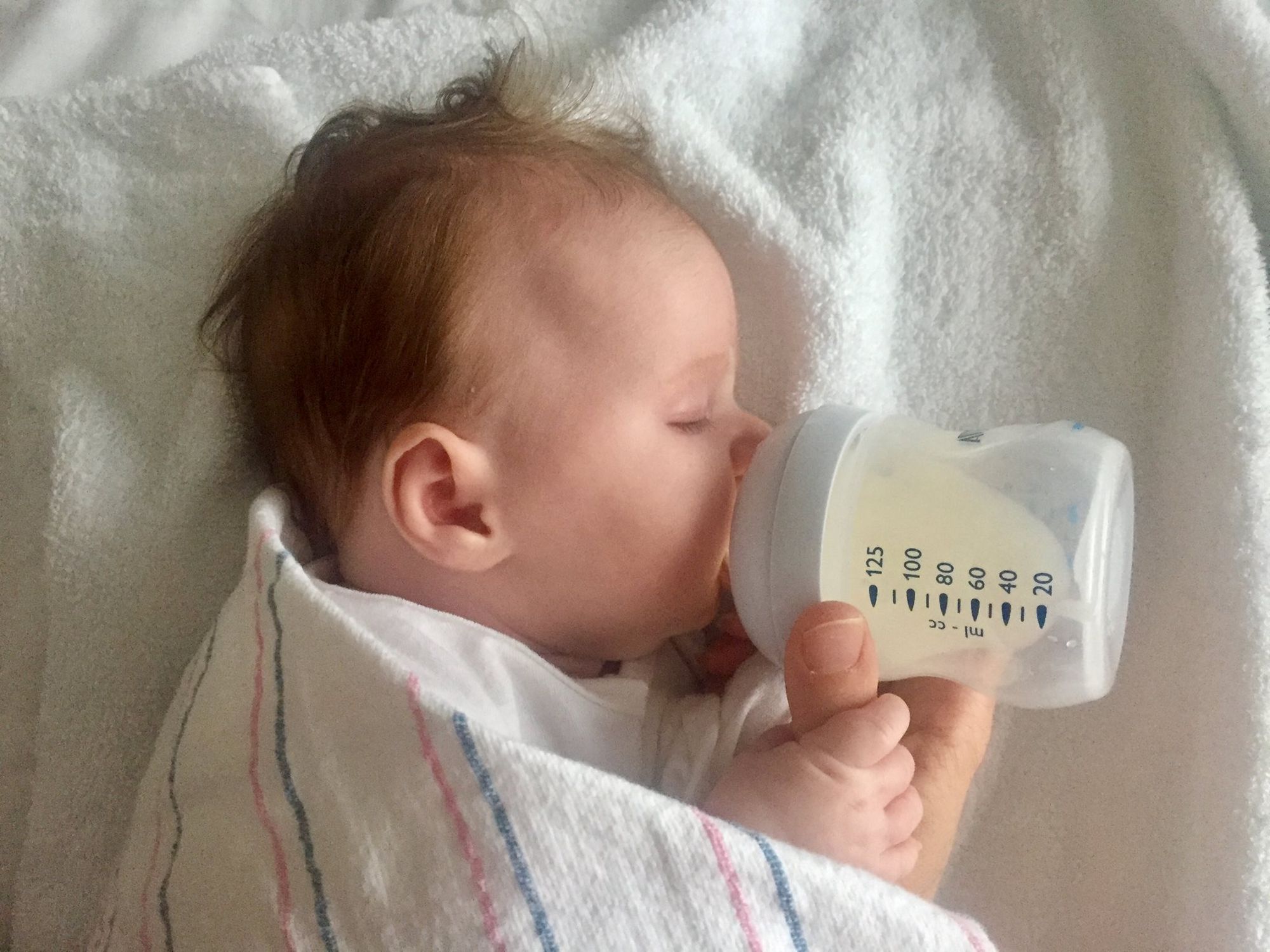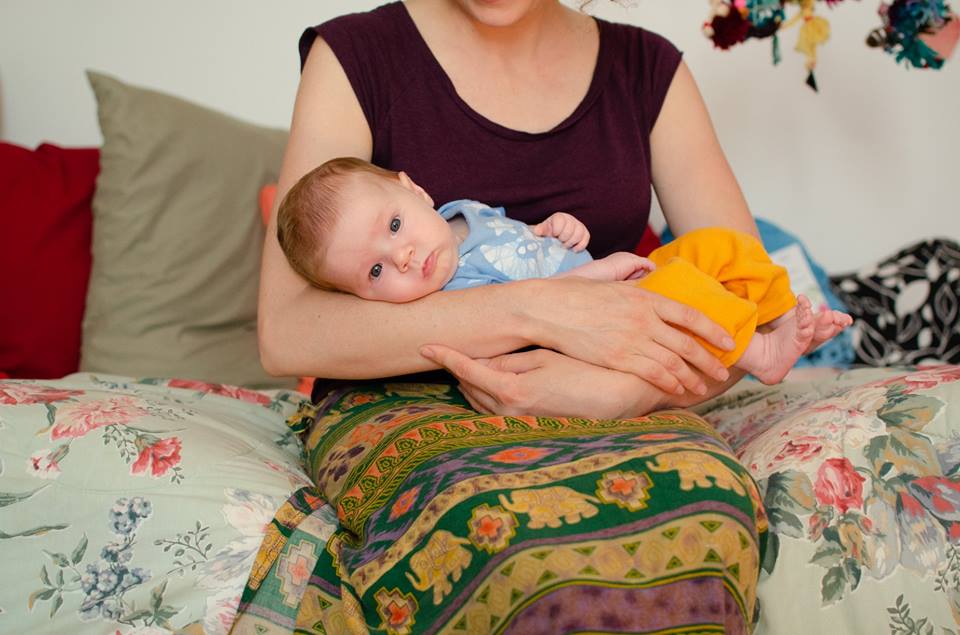Make sure that you are seen by a lactation consultant immediately following the birth. The trauma of an unexpected surgery can cause many women to have difficulty producing enough breastmilk. Even under the best of circumstances breastfeeding doesn’t always work right away, sometimes there are issues with the baby like tongue or lip ties that cause a poor latch. Sometimes there are issues with the positioning of the baby or the milk supply of the mother. If any of these issues goes uncorrected for more than a day it can cause the mothers nipples to get extremely sore and chafed which can in turn lead to the maternity nurses offering the mother a nipple shield. Nipple shields can offer short term relief from pain but they frequently cause a whole host of increasing difficulty and problems with the baby’s latch and the mothers milk supply and they usually don’t resolve the underlying cause. Not all maternity nurses are equally knowledgable or experienced in breastfeeding support. A trained lactation consultant or International Board Certified Lactation consultant (IBCLC) or even a volunteer breastfeeding councilor can really help you get off to the best possible start in your breastfeeding relationship.
Happy to report Frankie is doing amazing with the new dynamic of being a big sister. Overall she’s indifferent about her baby brother. What impresses me most is her patience with my limited interaction and attention. Also her calmness as she watches her brother nurse around the clock. I actually nursed Frankie through pregnancy, 1-2 times a day. This morning I woke up engorged with my new milk supply. It was such peace of mind to nurse Liam while Daddy and Frankie read books next to us. Once Liam finished I invited Frankie to help relieve the other side (so much better than a pump!)…she didn’t fuss once while waiting her turn and she listened when I said “ok, after I sing three songs we’ll be all done nursing.” She immediately released and continued to happily read books. Celebrating the small victories and prepared for the ebb and flow which is sure to come as we transition to a family of four. Taking it one day at a time.
Rhiana Westlund
- Breast Pump
- I had stopped breastfeeding the second day home. My daughter never latched on. The entire stay in the hospital I had to pump. The pump in the hospital was much more powerful and it didn't take long. Additionally my milk was not enough for my daughter and she continued to lose weight beyond the initial couple days. We had to supplement with formula in the hospital otherwise she would have to have stayed longer. I have since read that statistics show C-section births often do not breastfeed as long. It was ok. My baby got the first 6 days of my breast milk, meaning she got the crucial time which has the most antibodies to pass on.
-Karen Hiemer
The next day as I was recovering and attempting to collect the colostrum that was pouring out of me, we realized we hadn’t heard from Children’s Hospital yet. We called and got the line transferred at least 5 times before someone told us that they had attempted her procedure and her heart stopped. For half an hour. And she had a brain hemorrhage. We asked if she was going to make it, and they told us to get to Children’s right away.
The next 48 hours are a complete blur. The nurses at Tufts handed me a handful of Percocets and I was literally running through the hospital to get in a cab. I never felt much pain. I never felt anything. I was also never able to make breast milk after that.
I wish someone would have told me the emotional and psychological strain that a c-section puts on you. It’s harder, or sometimes impossible, to make breast milk and that’s okay.
-Raleigh Russel
Because of her traumatic birth my baby needed to be intubated and tube fed and she was not able to take any food by mouth for the first three weeks. The morning after she was born I was introduced to a breast pump. I had never even thought about pumping milk, I assumed I would be breastfeeding my baby. It quickly became apparent to me that the only thing I had any control over in this scary situation was my own breasts. My baby was so far out of my control and we weren't even able to hold her or do anything for her at first so pumping milk became my central mothering focus. Luckily Massachusetts General Hospital (MGH) has a dedicated pair of trained lactation consultants on rotation and they showed me how to use the pump and explained very bluntly what would happen to my milk supply if I didn't follow their rigorous schedule. They put the fear in me and I pumped my colostrum and breast milk around the clock, setting my alarm to wake up every two hours through the night. The process was exhausting: assembling the pump, staying awake for the full 20 to 30 minutes of pumping, collecting and labeling the milk, cleaning all the parts and then falling asleep only to have to do it all again in 2 hours. Nevertheless I persisted and I was very lucky that my milk supply came in with no issues. After the first week of being given only IV vitamin nutrients and colostrum on a q-tip my baby was finally well enough to be able to be fed my milk exclusively through a tiny feeding tube that went in her nose and directly down into her stomach. Luckily by then I already had amassed a good supply of frozen colostrum and milk for them to feed her.

After two weeks of being intubated the breathing tube was removed and then a week later she was finally able to try breast and bottle feeding for the first time at 23 days old.When we first tried breastfeeding she surprised the nurses by being able to latch on right away but it was too tiring for her so she wasn't able to get enough milk. We worked really hard every day trying to teach her how to take all her milk orally by both breast and bottle. After 5 weeks in the NICU she was well enough to be discharged but she wasn’t strong enough or coordinated enough to get her nutritional needs met by oral feeding alone and she was still getting more than half her milk through the feeding tube at every meal. In order to get us discharged home without her needing a long term feeding tube I spent a week with her in a special rehab hospital just teaching her to drink from a bottle. It was hard work and I still had to pump every two hours to keep up my milk supply because she wasn’t able to nurse efficiently herself. After a week of trial and error and really intense effort she finally understood how to effectively suck from a bottle and we were given permission to go home.

Once we were home I went through another intense week-long process of teaching her how to breastfeed. We began with a nipple shield and I tried many different positions to help her latch more deeply. The two most helpful tools for me were “biological or laid back nursing” and “the deep latch technique”. After several days of frustration, tons of internet research and endless hours of really focused effort she learned how to nurse with a nipple shield. I remember the first time we left the house without the ball and chain of breast pumps and bottles. It was amazing. The feeling of liberation and freedom was incredible, just me and my baby out in the world living our lives! After another few days of intense effort I was able to slip the nipple shield away and have her continue nursing without it and then we were truly free, not reliant on any devices or tools, just me feeding my baby the way I had always imagined it. By the time she was two months old our nursing relationship was solid. I feel really lucky that she was able to adapt and learn a whole new way of drinking milk so many times, first the bottles, then the nipple shield and finally just my breast.

She had tongue and lip ties which had to be remediated (cut) by a specialist oral surgeon when she was four months old and after that her latch got much better and she stopped making gulping and clicking sounds when she nursed and she began to really gain weight. It's been smooth sailing ever since and now at two years old she still nurses throughout the day. Our breastfeeding relationship is so sweet and intimate (and sometimes hilariously goofy) I’m so glad that we were able to create this lovely connection after such a tough start.
-Katrina Nevin
Resources
https://www.llli.org/
La Leche League International (LLLI) wrote the classic resource book The Womanly Art of Breastfeeding and the organization is dedicated to supporting and educating women around the world in all aspects of the breastfeeding relationship from birth to toddlerhood. You can ask your hospital if they have a La Leche League certified breastfeeding consultant on call.
Kelly Mom was the most useful resource for me when I was researching the best way to use a breast pump, ways to increase my milk supply, methods to switch from bottle feeding to breast feeding, using a nipple shield correctly and then weaning off the nipple shield, tongue ties and more!
